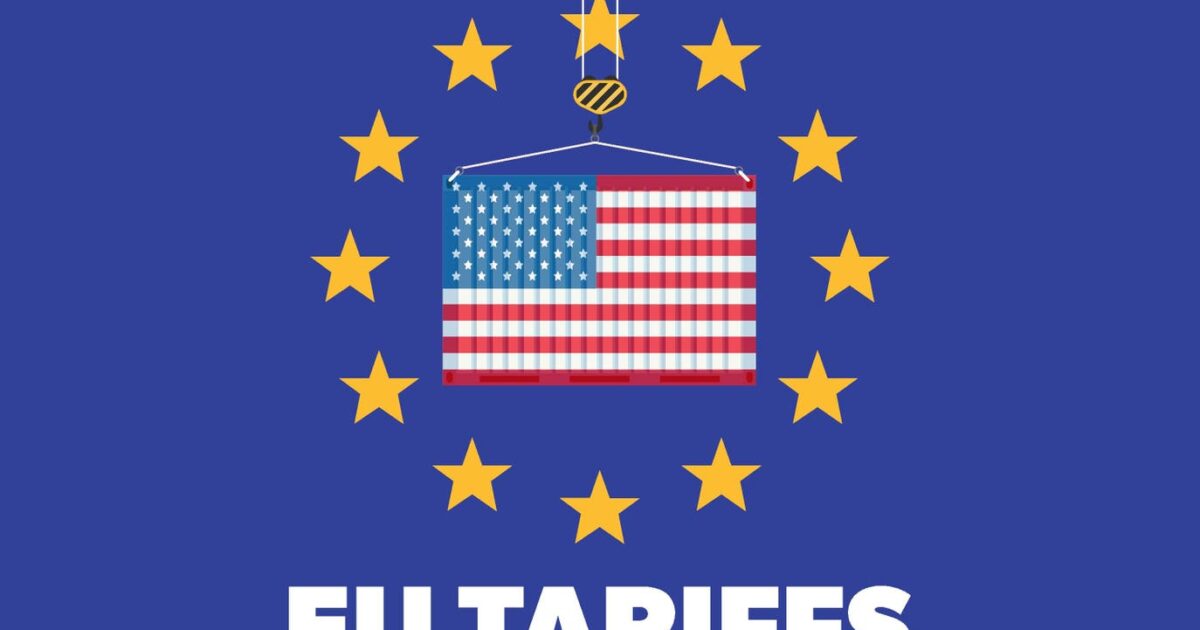European Auto Investors May Be Underestimating Trump Tariff Threat

Vector illustration.
The mood music is calm as European auto investors await the deadline on talks between the U.S. and the European Union on tariffs. But before getting too complacent, they should remember President Donald Trump’s goal is to end what he considers to be long-term European trade gerrymandering that might inhibit a deal on autos.
President Trump paused his attempt to reform overall tariffs on U.S. trade for 90 days and that ends July 9. The U.S. imposed a 20% tariff on European goods but quickly suspended it ahead of the deadline. Last month President Trump threatened a 50% tariff because the talks were bogged down, but after speaking with European Commission President Ursula von der Leyen, he reverted to July 9.
HSBC Global Research reflects general confidence that a disastrous tariff war can be averted, at least in the automotive business.
“Confidence appears to be growing around a deal with the U.S. that sees a degree of tariff walk-back. If this comes, it is likely that earnings, especially for the German (manufacturers) will get a boost, but we’re not convinced it will reverse all the pain,” HSBC Global said in a report.
As well as worrying about the possible damage a tariff war with the U.S. might do, European auto stocks have been rocked by a range of negatives. These include a slowdown in China, where Volkswagen , BMW and Mercedes have seen traditionally huge profits pared back, Chinese impact in Europe as their imports advance, while high local interest rates and a sluggish economy hurt consumer confidence.
Tariff concerns ease
Since April, investor concerns about the possible U.S. tariff burden have eased, investment bank UBS said.
Bernstein Research, in a recent research note, looked at the impact on European manufacturers of moderate pressure from higher U.S. automotive tariffs.
“BMW and Mercedes are better positioned due to their substantial U.S. production footprints, and can increase U.S. output without incremental (capital spending). Ferrari’s strong brand pricing power limits its EBIT (earnings before interest and tax) impact,” the report said.
“By contrast, VW and Porsche retain notable exposure, with EBIT impacts ranging from €500 million to €900 million ($590 million to $1.06 billion) depending on pass-through assumptions,” according to the report.
Impossible to predict
2009 Mercedes Benz CLK Cabriolet. Artist Unknown. (Photo by National Motor Museum/Heritage … More
Professor Ferdinand Dudenhoeffer, director of Germany’s Center for Automotive Research, said he finds it impossible to predict President Trump’s actions, but hopes for a solution that would eliminate tariffs on both sides.
“My suggestion would be as follows: No tariffs on cars and car parts. And that includes semiconductors and software and IT for cars, carmakers and suppliers,” Dudenhoeffer said in an email exchange.
“So, if Mercedes builds the CLK (two-seater sports car) in Stuttgart, they need semiconductors from Nvidia and software from Google Maps. And it’s not just Nvidia and Alphabet, but also Microsoft, Amazon, Oracle, Qualcomm, and others that “export” software, semiconductors, and cloud solutions from the U.S. to Europe. Very large budgets are at stake. Not just for the automakers, but also for the parts manufacturers and suppliers.”
“So it could be that simple: No tariffs on cars and car parts in either direction. The U.S. would gain more than with a 33% tariff on a few imports of large sedans or sports cars,” he said.
Trump has said international competition, particularly from the E.U., has benefited from the U.S.’s traditional low tariffs, which hasn’t been reciprocated. He insists his ultimate goal is free trade.
Trump determined to fix long-term EU duplicity
Earlier this year, former U.S. ambassador to the EU Gordon Sondland, said in a BBC interview Trump is determined to put right what he considers long-term unfairness by the EU through tariffs and non-tariff barriers.
Ferrari California. Ferrari looks imune from even the harshest tariffs.
Sondland said the EU imposes hidden barriers on American products. For cars, that can mean different safety standards. For food, there are also standards the EU doesn’t like. Hormone-fed beef is one area of contention.
“If we sell you a vegetable or a car or a product if it’s safe to use in the U.S. it should deemed to be safe to use in the EU,” Sondland said, adding that he didn’t speak for the Trump administration.
He was asked to sum up Trump’s tariff plan for Europe and the world.
“The U.S. is tired of talking about impediments to its foreign trade and wants action now,” he said.
Sondland was the ambassador to the EU during Trump’s first term.
America’s big advantage in services
Europeans point out that while its trade deficit with the U.S. is large, the American advantage in services like high-tech, media and software is even bigger.
Before Trump initiated the tariff changes, the U.S. charged European automakers 2.5%, while Europe charged U.S. imports 10%.
Automotive consultants JATO Dynamics pointed out the huge imbalance in U.S./EU auto trade, with 821,000 vehicles moving from east to west in 2024 and only 188,100 moving in the other direction. In a report, JATO said this was due in part to the lack of global appeal of U.S. made vehicles.
This could spur a wave of U.S. protectionism.
Computer generated 3D illustration with a monster truck isolated on white background
“A new wave of U.S. protectionism could dramatically reshape the global automotive industry, as the United States looks to redress a persistent imbalance with the European Union in the trade of vehicles.” JATO said in a report.
The report said U.S. car buyers wanted much bigger vehicles than Europeans.
Europe doesn’t want big SUVs, pickup trucks?
“Pick-up trucks and large SUVs, in which American carmakers have largely specialized, have been a double-edged sword,” JATO global analyst Felipe Munoz commented.
“While they have been a major source of profitability for America’s two largest automakers – General Motors and Ford – demand for these vehicles in other markets does not exist on the same scale as in the U.S.,” Munoz said.
“Without a concerted effort by U.S. manufacturers to develop truly global products that align with regulatory requirements and market-specific preferences, this imbalance is likely to persist,” Munoz said.
President Trump might point out this was another example of hidden EU barriers to U.S. imports, because Europeans might well be eager to buy huge U.S. SUVs and pickup trucks, but were unable to afford to use them because of massive fuel taxes. It costs Europeans around 3 times as much to fill their SUVs and sedans as Americans because of massive taxes which would be unacceptable in the U.S.

